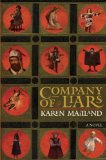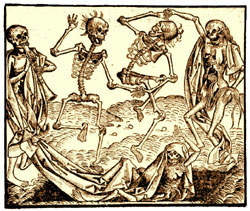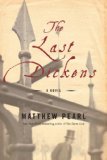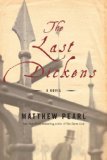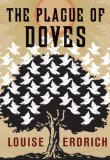 Karen Maitland’s novel A Company of Liars is frequently compared to The Canterbury Tales. I think it’s an unfair comparison and one that almost made me put down the book. I think perhaps the only similarities the two works share are that Maitland’s travelers are also a ragtag group thrown together on a voyage (some of whom tell stories) and that they are set in roughly the same time period.
Karen Maitland’s novel A Company of Liars is frequently compared to The Canterbury Tales. I think it’s an unfair comparison and one that almost made me put down the book. I think perhaps the only similarities the two works share are that Maitland’s travelers are also a ragtag group thrown together on a voyage (some of whom tell stories) and that they are set in roughly the same time period.
It is 1348 and England is gripped by the Plague. Nine travelers are thrown together on the road as they are escaping the dreaded disease. Each traveler has a secret and lives in fear that others will discover it. Meanwhile, they are pursued by bad luck, disease, and possibly even authorities as they make their way across England.
This book became an engaging read, but I will admit it took me a while to get into the book. I felt encouraged by some of the positive reviews I read and expected a real surprise ending; however, Maitland is careful to plant clues to enable careful readers to predict each traveler’s secret, and I was able to deduce that of the narrator, possibly preventing some of the surprise the other reviewers mentioned. It could be that I was reading The Hound of the Baskervilles at the same time and was primed for clues, but it seemed fairly easy, for the most part, for a careful reader to guess each traveler’s secret—even that of Narigorm, the creepy child who casts runes to tell the fortunes and seems to hold everyone in her thrall with the exception of the narrator, Camelot, who understands who the child is when the others refuse to see.
I would recommend the book only to readers who have a substantial interest in the Middle Ages; otherwise, the bleakness of the novel might prevent the reader from enjoying it. I didn’t catch any glaring historical errors, and Maitland helpfully provides a Historical Note and Glossary to help readers. I do have a quibble with a mythological element Maitland used, but I don’t want to give the problem away for readers who wish to read the book. If you wish to know, you can select the area that appears between the arrows in the following paragraph, and the text will be revealed.
>>The Morrigan had different guises and forms depending on the literature one reads, but she is associated with death at war, and I didn’t find her association with the deaths of the travelers to be congruent with my understanding of her function in mythology.<<
Aside from this quibble, I enjoyed the book, which became more engaging as I continued to read.
